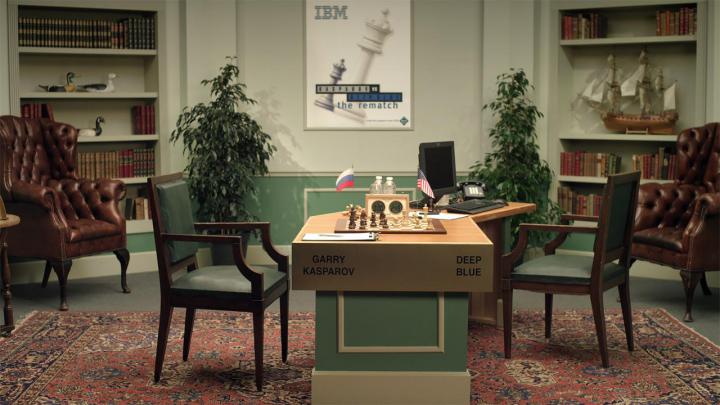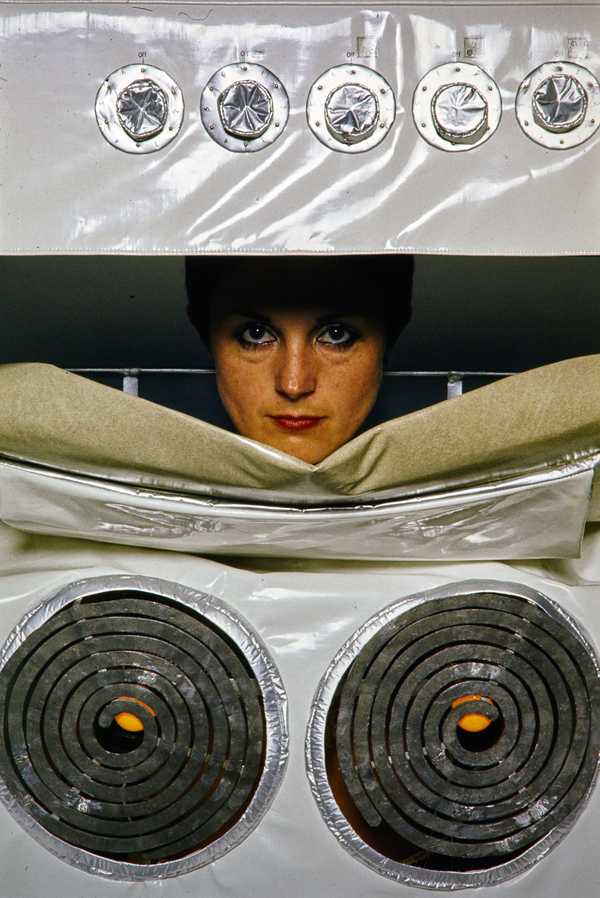1834 – La Mémoire de Masse ("The Unmanned" series)
2015 - Film & Video (Film & Video)
13 minutes
Fabien Giraud & Raphael Siboni
-In which predicting its past it lives working and dies fighting- Fifth episode of The Unmanned , “La Mémoire de Masse” unfolds during the second Canuts revolts in Lyon in 1834. These riots now known as the ‘bloody week’ came as a reaction to the automation of work in the silk industry by the Jacquard Loom and its implementation of the punched card – first historical ‘mass storage’ system allowing the inscription and replication of complex weaving patterns. This inaugurating event in the history of workers emancipation movements of the 19th century is actually the first revolt against modern computation. Fully computer-generated, the riot sequence that splits the film in two parts operates a reversal of history by transforming a revolt against the algorithm into an algorithm of revolt.
The collaborative work of Fabien Giraud and Raphael Siboni is part of a reflection on the history of cinema, science, and technology. For them, cinema is a technological invention which fundamentally transforms our relationship to the world. Giraud and Siboni are fascinated by technological acceleration. So much so that they imagine the possibility of a cinema without a human figure; one which does not subject bodies to the frame, nor bend gestures to duration. Each of their films bring radically different temporalities that are foreign to our present. They choose to film in hidden places, like the particle accelerator under the Louvre museum in La Mesure Louvre (2011), or abandoned places like the Greek temple in Bassae-Bassae (2012) where human absence is hollowly felt. Giraud and Siboni are also inspired by popular culture, micro-histories and major political conspiracies.
Colors:
Other related works, blended automatically
» see more

© » KADIST
Fabien Giraud & Raphael Siboni
– In which a storm breaks out in a computing division and its simulation is turned inside out – Fourth episode of The Unmanned series, “The Uncomputable” is the story of a failure: the building in the northern plains of Scotland of a giant climate prediction factory by meteorologist Lewis Fry Richardson...
Related works sharing similar palette
» see more

© » KADIST
In New Mexico, Camacho investigated the reasons why the inhabitants of a village decided to change its name Truth or Consequences in the 50’s; with Group Marriage, an on-going project as part of the Amsterdam Spinoza Manifestation (2009), he petitions the Dutch parliament to open civil marriage to groups of citizens who would marry each other...
Other works by: » Fabien Giraud & Raphael Siboni
» see more

© » KADIST
Fabien Giraud & Raphael Siboni
– In which a storm breaks out in a computing division and its simulation is turned inside out – Fourth episode of The Unmanned series, “The Uncomputable” is the story of a failure: the building in the northern plains of Scotland of a giant climate prediction factory by meteorologist Lewis Fry Richardson...

© » KADIST
Fabien Giraud & Raphael Siboni
2017– In whiche a lemyng starre returneth in the yeer foretolde and alle thing that spak to us turneth ayeyn to silence – Sixth episode of The Unmanned and sharing the same camera movements as the episode “1997 – The Brute Force”, “Mil troi cens quarante huyt” refers to the appearance of a comet in 1759 – thus validating the computation and rational prediction of its return by the British astronomer and mathematician Edmond Halley...

© » KADIST
Fabien Giraud & Raphael Siboni
2014– In which defeated he leaves the scene and the stage is left in search of its scale – Second episode of The Unmanned series, “The Brute Force” reconstructs the minutes following Garry Kasparov’s defeat against the IBM Deep Blue computer on 11 May 1997...

© » KADIST
Fabien Giraud & Raphael Siboni
2014– Thisstoryoffriedrichkurzweiliwanttotellit- myselfhowhelivedinthisroomandh – Inspired by the writings of the feral child Kaspar Hauser and told by the young Friedrich, both father and son of Ray Kurzweil, this story unfolds on the microscope images of a blade cutting through metal...
Related works found in the same semantic group
» see more

© » KADIST
Hong-Kai Wang
2011The video Music While We Work (2011) is the first part/work of a long-term research project started in 2010...

© » KADIST
Mona Marzouk
2014Trayvon is a series of acrylic paintings by Mona Marzouk that engages the courtroom as its points of departure...





